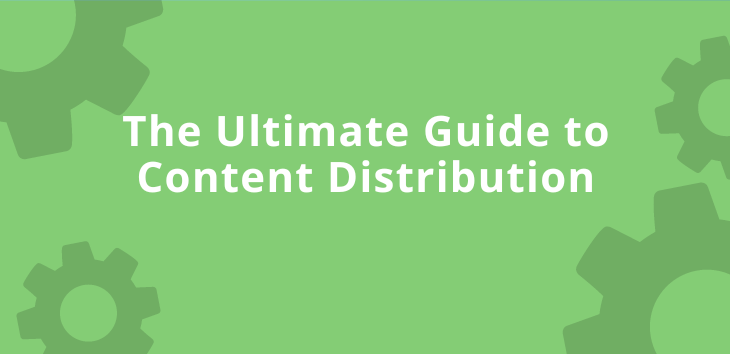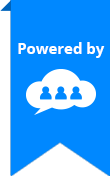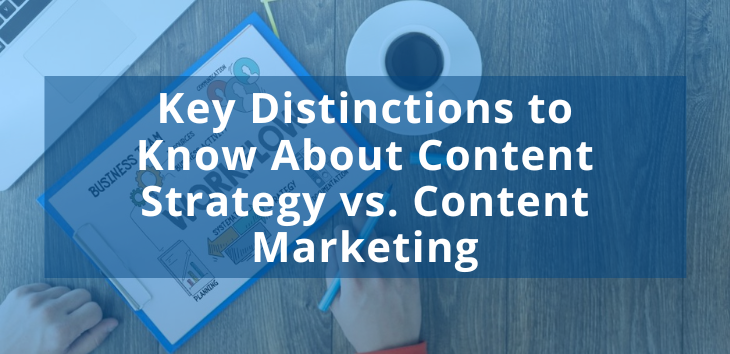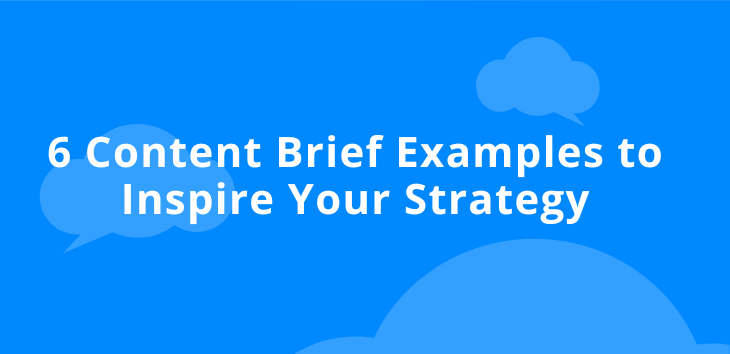Does publishing your content sometimes feel like shouting into an abyss? The truth is, even the best ideas need a push to reach their full potential. Effectively accomplishing content distribution will help you consistently connect with the right people, build authority, and achieve your marketing goals.
Distribution is a powerful step of a well-constructed content strategy. After developing a solid plan and a clear understanding of your audience, distribution is the final touch that amplifies your reach and fuels success.
As you continue reading, you will find valuable information in this guide that will help transform your content into a powerful business asset.
What Is Content Distribution and Why Is It Important?
Content distribution is the process of sharing content across relevant online channels to maximize its reach. It’s the final step in your content’s journey, connecting your brand with your audience at the perfect time.
Benefits of an effective content distribution strategy
Content creation is a labor of love. We get it. And a well-executed distribution strategy makes certain your efforts deliver results.
Meaningful engagement: Quality content sparks conversations. Getting people to talk about your content fosters brand loyalty and establishes thought leadership.
- Content distribution example: Say a marketing agency publishes an article on the evolving landscape of influencer marketing. Sharing it on LinkedIn starts discussions and debates in the comments section. This engagement establishes the agency as a thought leader and provides readers and potential customers with useful information about the industry.
Increase website traffic: Effective distribution strategies drive qualified traffic back to your website, ultimately bringing in more leads and sales.
- Content distribution example: An e-commerce company creates a comprehensive guide on “Essential Winter Hiking Gear.” Distributing it on outdoor enthusiast forums, with a clear call-to-action prompting users to visit the website for the full product range, can significantly increase website traffic.
Enhance brand visibility: A well-curated and consistent distribution strategy across various channels keeps your brand top-of-mind with your target audience.
- Content distribution example: A bakery creates recipe videos showcasing its signature desserts. Distributing these videos on the brand’s YouTube channel as well as relevant food blogs and subreddits builds brand awareness and recognition. The engaging format and targeted distribution channels ensure the content resonates with specific customers who are actively searching for baking inspiration.
Better SEO: Distributing your content across authoritative websites can improve your website’s search engine ranking and drive organic traffic.
- Content distribution example: A legal firm publishes an informative blog post on “Understanding Common Clauses in Employment Contracts.” Uploading this content to legal resource websites and sites such as Quora and Reddit can generate backlinks. These backlinks act as signals to search engines that the content is valuable and trustworthy, potentially boosting ranking for relevant search terms.
Establish thought leadership: Consistently sharing valuable and insightful content across relevant platforms establishes your brand as an authority in its industry.
- Content distribution example: A financial advisor creates a series of educational videos on personal finance tips for young adults. Posting them on YouTube and Reddit positions the advisor as a credible source of information. As a bonus, it attracts potential clients who are actively seeking financial guidance.
Content distribution transforms content into a powerful tool for growth. It ensures your content reaches the right audience, sparks meaningful engagement, and drives real business results.
What Are the Three Types of Content Distribution Strategies?
Your content’s reach hinges on three distribution channels: owned, earned, and paid.
Owned channels: These are your digital properties, such as your website, social media pages, and email newsletters. They’re your content’s home base, where you have full control over the messaging.
Earned channels: You gain visibility organically on these channels. Picture your content being shared across social media, mentioned in industry publications, or linked to from other websites. This buzz of engagement builds credibility, boosts reach, and helps you establish a community.
Paid channels: Propel content using strategic investments such as paid ads on search engines, social media platforms, and sponsored articles. These channels guarantee visibility to a highly specific target audience.
Understanding the three distribution channels is essential for designing a content strategy that maximizes your content’s impact.
Maximize your content’s impact by refining your approach with Crowd Content’s Strategy Services. We highlight the crucial role of planning and creation before distribution, ensuring your content strategy is as effective as possible. Let us help you widen your reach, meet business goals, and engage your audience more deeply.
Click to review and enhance your content strategy now.
Let’s expclore the major distribution channels in depth.
Owned channels
Owned channels are your digital properties. You have complete control over the content, messaging, and distribution. They include your website, blog, social media accounts, email lists, and any other platforms you manage directly.
Here are some examples of how businesses use owned channels:
- Digital marketing agency: Blogs packed with industry insights and case studies solidify a digital marketing brand’s expertise.
- Chain of retirement homes: Websites and blogs feature heartwarming resident stories, advice for families, and details on amenities.
- Freelance SEO specialist: An optimized website with compelling blog content is vital to demonstrating a freelance SEO expert’s prowess.
How owned channels differ from earned and paid:
- Control: You decide what gets published, when, and how it’s presented. This allows for consistent brand messaging and targeted content.
- Audience: Owned channels tap into your existing audience of followers, website visitors, and subscribers, strengthening relationships.
- Sustainability: While requiring ongoing effort, owned channels often provide the best long-term return on investment compared to reliance on paid tactics.
Who benefits the most from owned channels?
- Businesses of all sizes: Owned channels form the backbone of any digital marketing strategy.
- Brands building trust: Consistent, valuable content nurtures a loyal audience that views you as reliable and credible.
- Audience engagement: Direct two-way communication through comments, social media interactions, and email fosters a sense of community.
Pros of using owned channels:
- Shape your brand voice and tailor your message without leaning heavily on external platforms or algorithms.
- Build direct relationships with your audience, fostering trust and brand advocacy.
- The initial investment in content creation pays dividends over time compared to continuously buying paid advertising.
- Owned channels have rich analytics on audience preferences and content performance, enabling you to refine your future strategy.
Cons of using owned channels:
- Success requires an ongoing passion for content creation, community management, and audience growth strategies.
- Building reach on owned channels usually takes significantly longer compared to the immediate reach of paid advertising.
- Understanding SEO principles, effective content creation, and social media engagement is essential for maximizing results.
Owned channels are the foundation of a well-rounded content distribution strategy. Investing time and resources in these platforms establishes a firm brand presence and generates insights for long-term growth.
Earned channels
Earned channels come from others organically promoting your content through shares, mentions, and backlinks. This type of distribution hinges on building relationships, establishing credibility, and creating genuinely valuable content that resonates.
Here are some examples of how businesses use earned channels:
- Addiction recovery center: A blog post about overcoming addiction could gain traction on social media and get shared by influencers in the recovery community.
- SEO agency: Active participation on relevant subreddits, providing insightful advice, builds trust and attracts clients.
- HVAC company: Helpful videos on furnace maintenance from YouTube get shared in home improvement Facebook groups, leading to a spike in calls.
How earned channels differ from owned and paid:
- Trust and credibility: Earned distribution often carries a greater sense of trust, as it comes from an impartial source, serving as social proof. Over the past couple of decades, social proof — as demonstrated in online reviews and testimonials — has emerged as a leading factor in purchase decision-making. Think of it like digital word-of-mouth.
- Amplified organic reach: Content can gain exposure to new audiences beyond your existing network.
- Cost effective: While it requires time and effort, earned distribution is cost effective, with the potential for long-term impact.
Who benefits the most from earned channels:
- Brands seeking credibility: Endorsements from external sources strengthen your reputation.
- Companies targeting new audiences: Earned channels open up opportunities to reach beyond your existing followers.
- Organizations with a limited budget: Earned channels work well for creative brands with budget constraints for paid advertising.
Pros of earned channels:
- Opens your content up to a wider audience, maximizing reach.
- Third-party validation strengthens trust and positions your brand as an authority.
- Quality backlinks from authoritative websites attract new audiences and boost search engine rankings.
- Exceptionally shareable content has the potential to “go viral” and spread rapidly, reaching a massive audience.
Cons of earned channels:
- You can’t dictate if or when others share your content, so earned channels require a focus on quality and relationship building.
- Cultivating relationships and creating share-worthy content takes time and persistent effort.
- While tools offer insights, tracking the direct impact of earned distribution can be more complex compared to owned or paid channels.
Earned distribution is a testament to the value of your content. While less predictable than other channels, it offers the potential for significant gains in reach, reputation, and authority.
Paid channels
Paid channels are paid investments that guarantee visibility. There are a vast array of options to choose from, allowing you to target your ideal audience with laser focus. From pay-per-click (PPC) advertising to sponsored content partnerships, paid channels deliver shockingly precise targeting.
Here are some examples of how businesses use paid channels:
- Pest control company: Targeted Google Ads ensure services appear at the top of local search results for keywords such as “pest extermination near me.” Social media ads showcase positive customer testimonials and promotions to a geographically focused audience.
- E-commerce brand: Retargeting ads on social media remind users of products they viewed, encouraging them to return and complete a purchase. At the same time, sponsored search results drive traffic to specific product pages.
- Content writer: Paid guest posts on niche industry blogs offer valuable insights and backlinks to their portfolio. Meanwhile, targeted Google Ads appear for searches such as “freelance copywriter for [industry] in [location].”
How paid ads differ from owned and earned:
- Guaranteed visibility: Paid channels offer immediate exposure, unlike owned and earned, which largely rely on organic growth.
- Hyper-targeted reach: Advanced targeting options let you pinpoint your ideal audience by demographics, interests, location, and behaviors.
- Faster results: Paid distribution can drive traffic and conversions more quickly compared to strategies focused solely on organic growth.
Who benefits the most from paid channels?
- Businesses seeking rapid growth: Paid channels accelerate reach and boost conversions, especially when entering new markets.
- Anyone targeting a niche audience: Precise targeting options are ideal for reaching specific demographics or segments.
- Those looking to measure results: Paid ads usually come with analytics that allow you to track ROI and optimize future campaigns for maximum performance.
Pros of using paid channels:
- Reach your target audience instantly and bypass the slow build of organic methods.
- Detailed analytics allow for continuous refinement and improvement of your campaigns.
- Easily increase or decrease your investment based on your goals and budget.
- Track conversions and leads to determine the exact return on your advertising spend.
Cons of paid channels:
- Depending on your industry and keywords, paid advertising can become expensive.
- Successful paid campaigns require planning, targeting, and optimization.
- Users can become desensitized to ads, potentially resulting in lower click-through rates over time.
Paid channels are a major boost, helping you reach your ideal audience and achieve desired outcomes. Using strategic execution and exploring advanced options such as native advertising and programmatic buying can propel your content toward widespread success.
How Do I Create a Content Distribution Strategy?
This section will guide you through the essential steps of creating a content distribution strategy that propels your message to the right people, at the right time.
1. Understand your audience and their expectations
A deep understanding of your target audience is the cornerstone of any successful content distribution strategy. Moving beyond basic demographics, craft detailed audience personas outlining pain points, goals, preferred content formats, and the online platforms your visitors frequent.
Next, map out how your audience interacts with content. Where do they go for information? What type of content influences their decision-making? Social media is a gold mine for these insights. Extensive research is nonnegotiable for this step.
2. Identify the ideal content types for your brand and audience
With your target audience firmly in mind, identify the ideal content types that align with your specific marketing goals. Are you aiming for brand awareness, lead generation, or boosting website traffic? Different content types excel in different areas.
For instance, informative blog posts nurture leads and establish brand expertise, while visually engaging videos capture attention and drive social media shares. A successful content mix caters to various learning styles and keeps your audience engaged.
Important note: Don’t get stuck in a single format. Explore the diverse landscape of content options, including blog posts, infographics, videos, social media updates, podcasts, ebooks, and webinars. Allowing your audience to engage with your brand in various formats helps them connect deeply with it, while catering to a variety of tastes.
3. Plan
A content calendar acts as your roadmap, outlining the content you’ll produce, the distribution channels you’ll use, and your publication dates. This structured approach ensures consistency and aligns content marketing efforts with your broader marketing goals.
Be sure to map out a purposeful distribution strategy, whether you use a content calendar or not. Carefully considering which channels best suit each piece of content is vital. Not every format is ideal for every platform. Customize and tailor your distribution approach accordingly.
Finally, keep in mind that timing is everything in the world of digital marketing. Knowing when your audience is most active online and thoughtfully scheduling your content distribution helps maximize engagement and reach.
4. Ensure uniform branding and brand voice across channels
Developing clear brand guidelines is foundational for online success. Your brand’s ingredients include voice, tone, and visual style. They’re the secret sauce for maintaining consistency across all platforms.
Customize your content for each platform while remaining true to your brand identity. Ultimately, a cohesive brand image across channels builds immediate recognition and solidifies your brand’s reputation in the minds of your audience.
5. Test
A willingness to experiment is vital. Test different content formats, distribution channels, and messaging to analyze what yields the best results for your specific audience and goals.
Pay close attention to analytics. They’re your north star. Monitor insights such as time on page, bounce rates, and click-through rate. Use these insights to refine your strategy, making data-driven decisions to optimize your content distribution efforts. Finally — and very importantly — don’t be afraid to pivot. If something isn’t achieving the desired results, be agile.
6. Execute
Sticking to your content calendar is vital for maintaining steady momentum and a reliable presence in your audience’s eyes. Why? Because consistent publishing signals dedication to potential customers and helps you ride that elusive algorithmic wave.
Just keep in mind that you must always prioritize quality over quantity. Two high-quality content pieces per week will always outweigh 20 pieces of low-value content. Each asset you publish should provide true value to your audience.
7. Measure
Focus on the metrics that directly align with your established goals. And whatever you do, be sure to utilize the wealth of analytics tools at your fingertip. These insights tell you exactly what your audience likes and dislikes.
Platforms such as Google Analytics, social media ad tools, and email marketing reports provide detailed data. Creating regular reports helps you analyze performance patterns and highlight areas for improvement.
8. Optimize and iterate
Optimize your strategy by making data-driven decisions and avoiding guesswork and assumptions at all costs. Continuously tweak your content formats, distribution channels, and messaging based on the insights derived from your analytics.
Poise yourself to experiment with trends and adapt your approach as technologies and audience behaviors shift.
Best Practices to Enhance Your Distribution Strategy
What are the key elements of content distribution? Let’s look at the most critical best practices.
Tool 1: Multiple Formats
Go beyond a blog post. Transform your content into various formats to cater to diverse learning styles and preferences.
Tool 2: Brand Assets
Create high-quality on-brand visuals such as infographics, images, and videos to elevate content, connect deeply with your audience, and strengthen brand recognition.
Tool 3: Smart Repurposing
Extend your content’s lifespan by adapting it for different platforms. Repurpose infographics into social media posts and video clips into Reels or TikTok content.
Tool 4: Thoughtful Interlinking
Connect your content with internal links to improve user experience and boost SEO, while encouraging exploration of your website.
Tool 5: Guest Posting and Interviews
Tap into new audiences by contributing content to relevant websites and interviewing industry leaders.
Tool 6: Search Engine Optimization
Optimize content with relevant keywords, language that’s relatable to your audience, and meta descriptions to improve search ranking and organic traffic.
Tool 7: Social Media Mastery
Cater content to each social media platform, leveraging features like Stories, Reels, and live streams to maximize engagement.
Tool 8: Email Marketing
Nurture leads and drive conversions with targeted email campaigns featuring your best content.
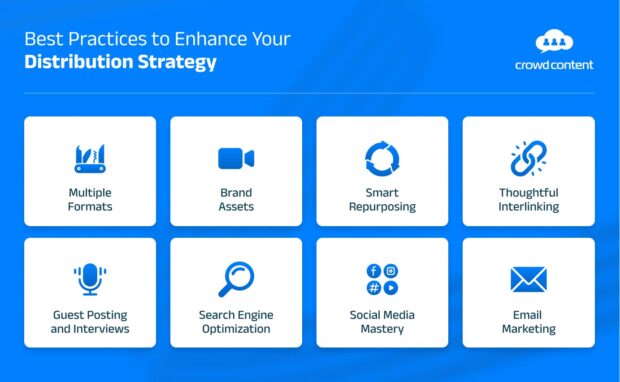
Top Content Distribution Platforms
Now that you understand the “why” and “how,” all that’s left is “where?” Here’s a breakdown of the four best content distribution channels.
1. Social media distribution
Social media platforms are where your audience spends time online. Strategize for each platform to meet your audience where they are. Let’s take a closer look:
Overview: Social media is unparalleled for building community, amplifying brand voice, and targeting content to specific audiences through organic posts and paid ads.
Best for: Each platform has its strengths.
- Facebook: Wide reach, versatile for B2C and B2B
- Instagram: Visually focused for lifestyle brands, strong with younger demographics
- X: Live updates, trending news, and niche conversations
- LinkedIn: Excellent for B2B, networking, and thought leadership
- YouTube: Great for video tutorials, product demos, and in-depth content
Time to see results: It can yield a quick engagement boost, but long-term success requires consistency and audience understanding.
Why it works: Social media fuels discovery and taps into the power of social sharing for extended reach.
2. Email marketing
Your email list is a direct line to a highly engaged audience. Nurture your audience with compelling content, and they’ll become your biggest advocates and most loyal customers.
Overview: Email marketing is ideal for nurturing leads and driving conversions. Directly reach your most engaged audience: those who opt in to receiving your content.
Best for: Businesses with an established email list, regardless of industry.
Time to see results: Immediate delivery, open rates, and click-throughs are trackable right off the bat. Nurturing campaigns show results over time. Just be sure to factor in the time and effort it takes to build an engaged email list.
Why it works: It allows for audience segmentation and provides valuable analytics on content preferences.
3. Content syndication networks
Supercharge your content’s visibility by republishing it on high-traffic websites. Content syndication expands your reach and builds brand awareness.
Overview: Publish content on third-party websites and platforms to expand reach and build brand awareness among new audiences.
Best for: Businesses aiming for high visibility across various reputable sites.
Time to see results: Quickly boosts traffic and reach when done right.
Why it works: Leverages the established audience of external platforms and may boost domain authority for SEO benefits.
4. Online forums and communities
Become part of the conversation on Quora and Reddit to subtly build your brand’s reputation. Offer genuine advice and insights to establish yourself as a go-to source of information.
Overview: Actively participate in discussions related to your industry, offering helpful answers and subtly referencing your own content where relevant.
Best for: Businesses aiming to build a positive brand reputation by demonstrating expertise and engaging directly with potential customers.
Time to see results: It’s a slow burn, but consistent participation yields trust and brand loyalty, directing interested users to your resources.
Why it works: Leverages the power of conversation and social proof, organically highlighting your brand as a problem solver.
Additional Content Distribution Services
Digital content distribution services are more far-reaching and targeted than DIY efforts because they lean on broad databases packed with insights. They provide expert support in crafting and implementing a comprehensive distribution strategy.
Crowd Content can deliver custom content distribution solutions that align with your unique goals. Our team of marketing experts can leverage data-driven insights to optimize your content’s visibility and engagement across various channels.
